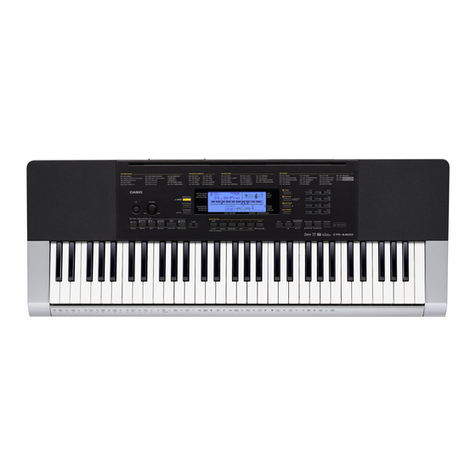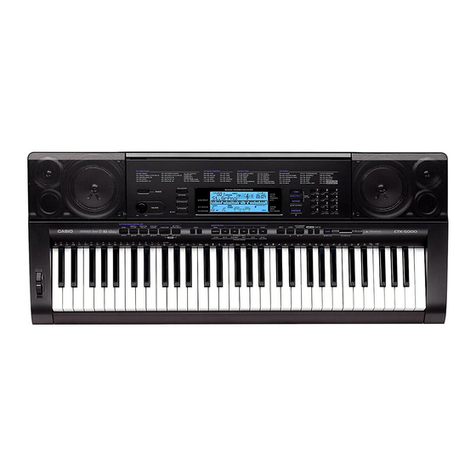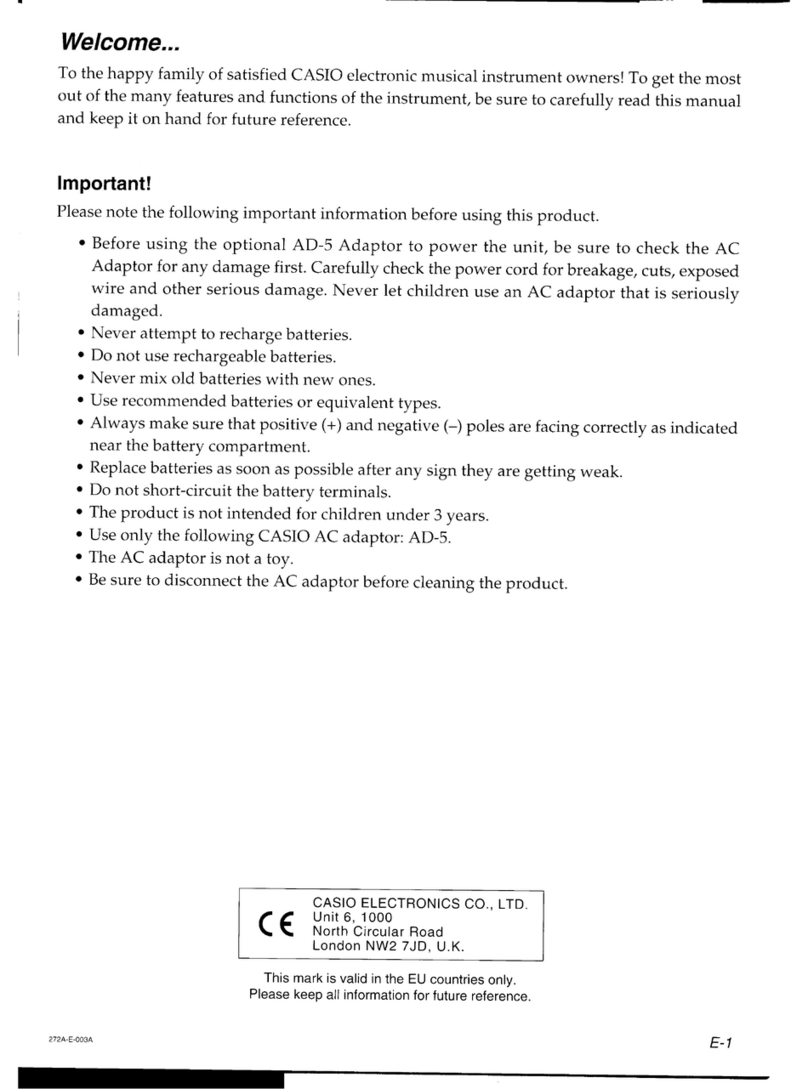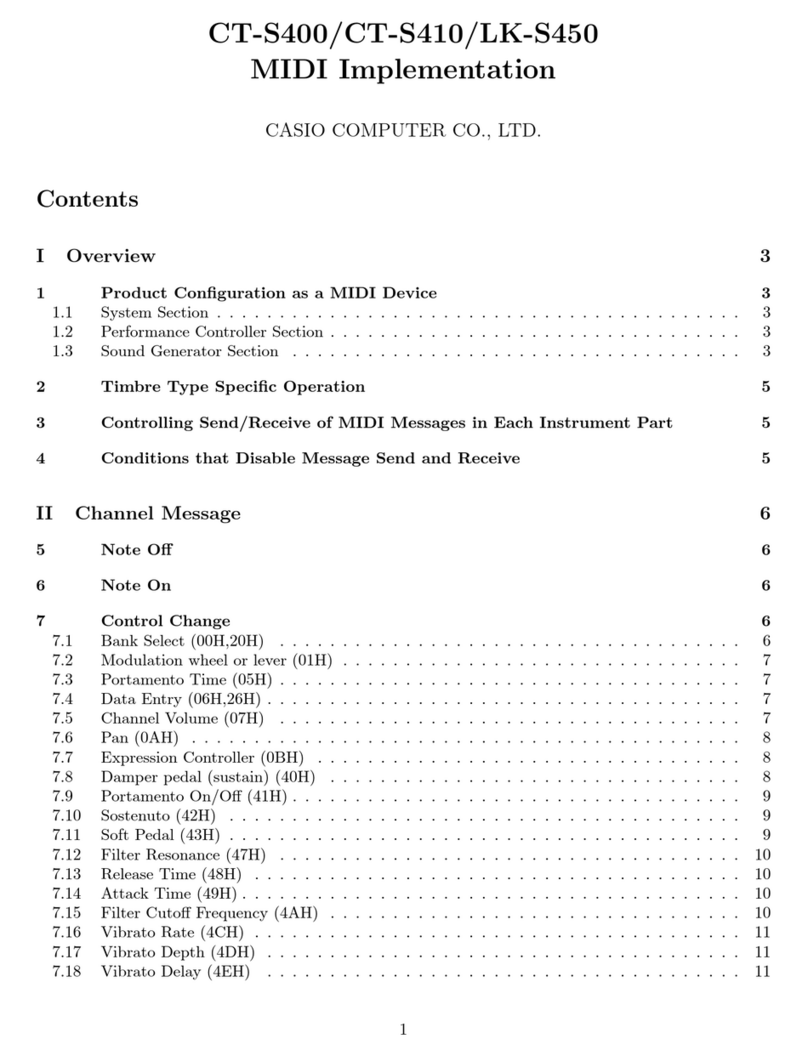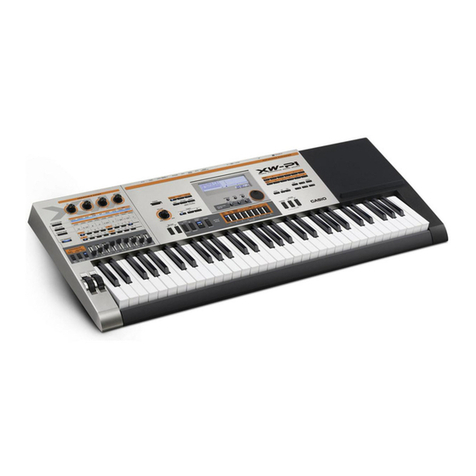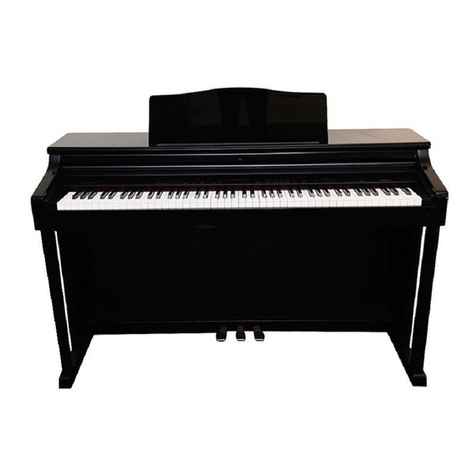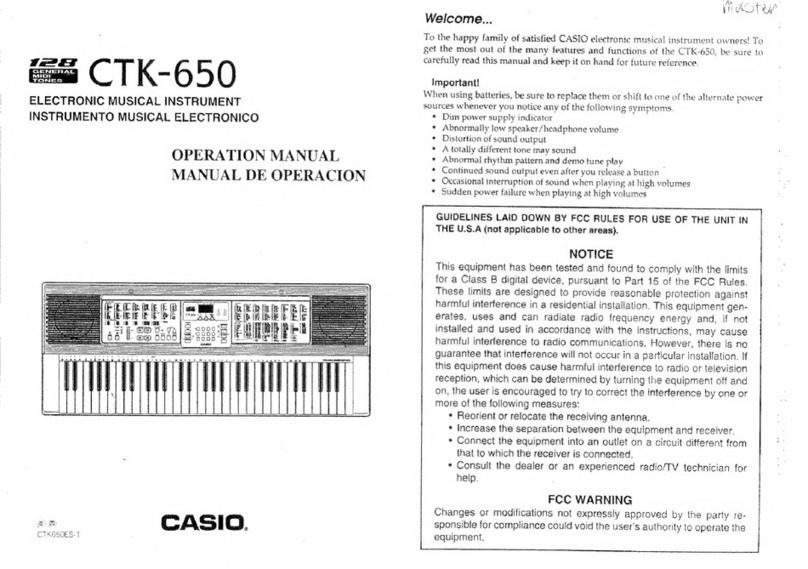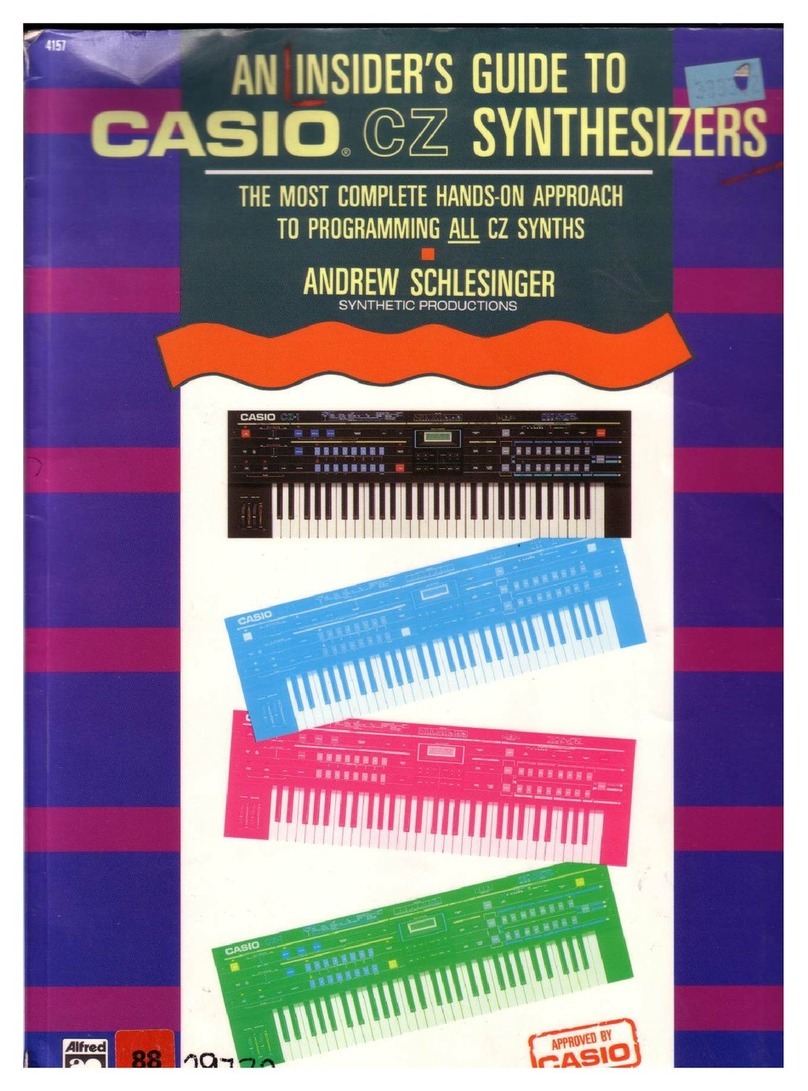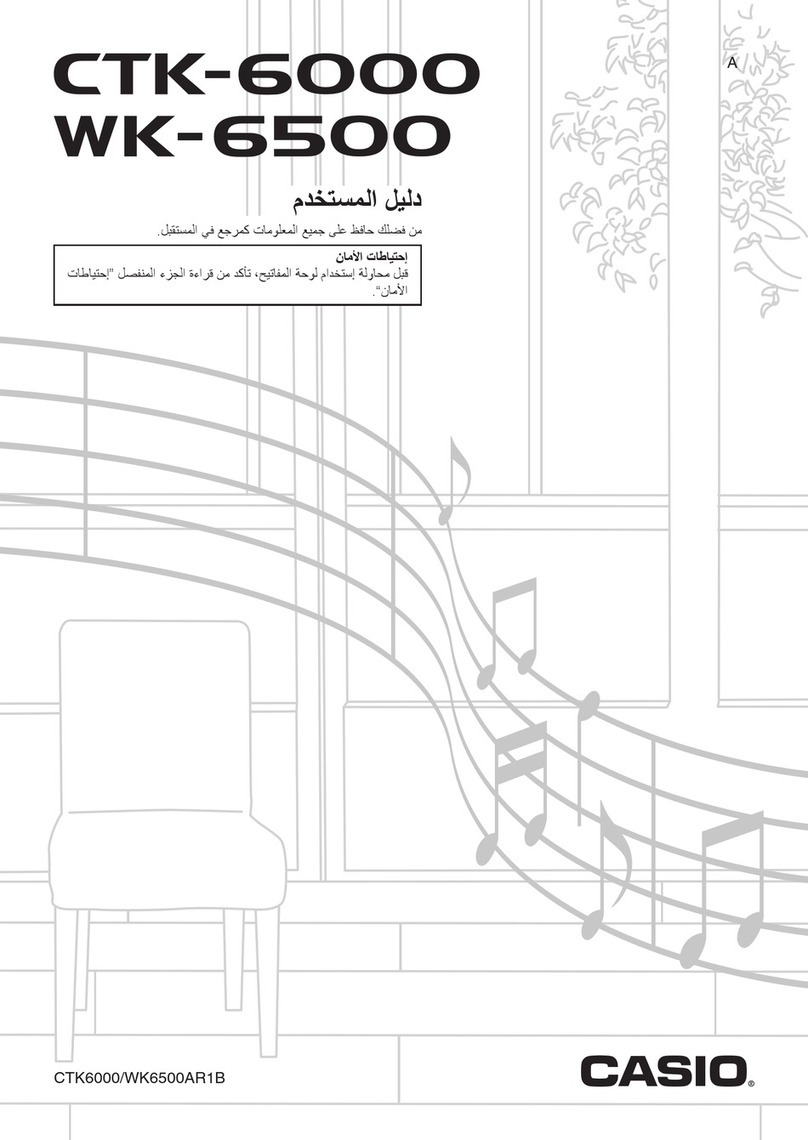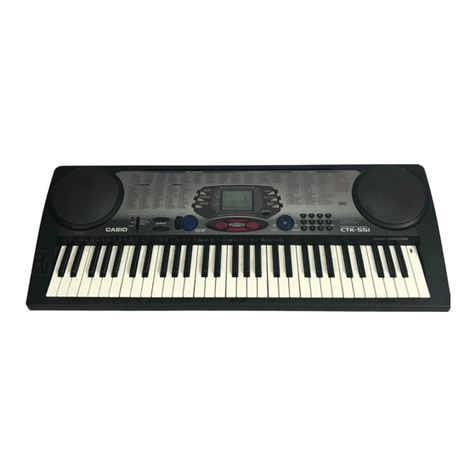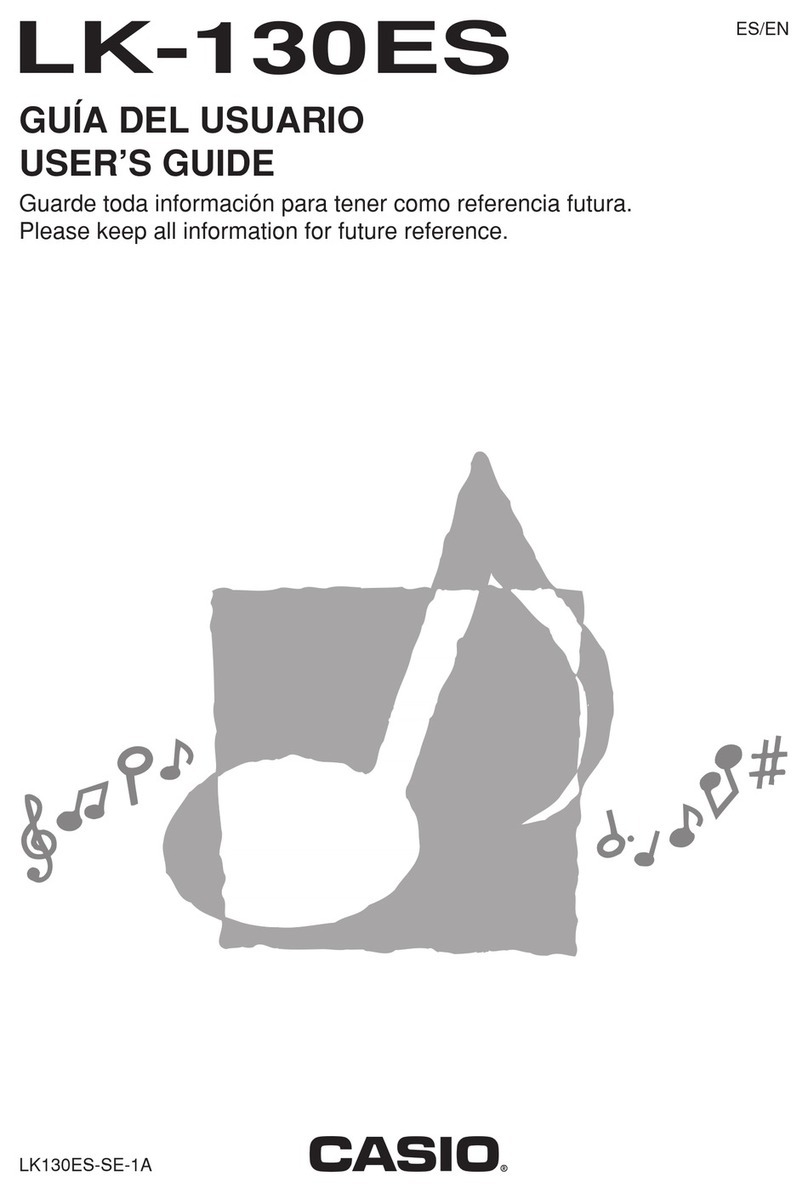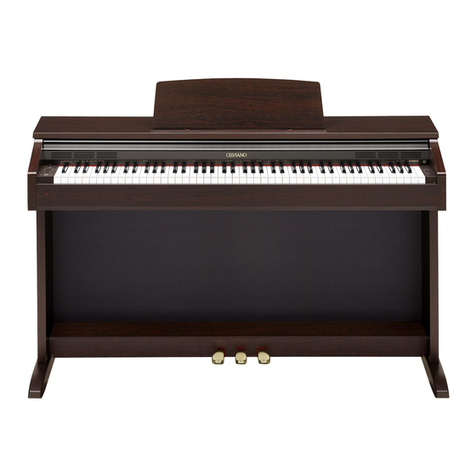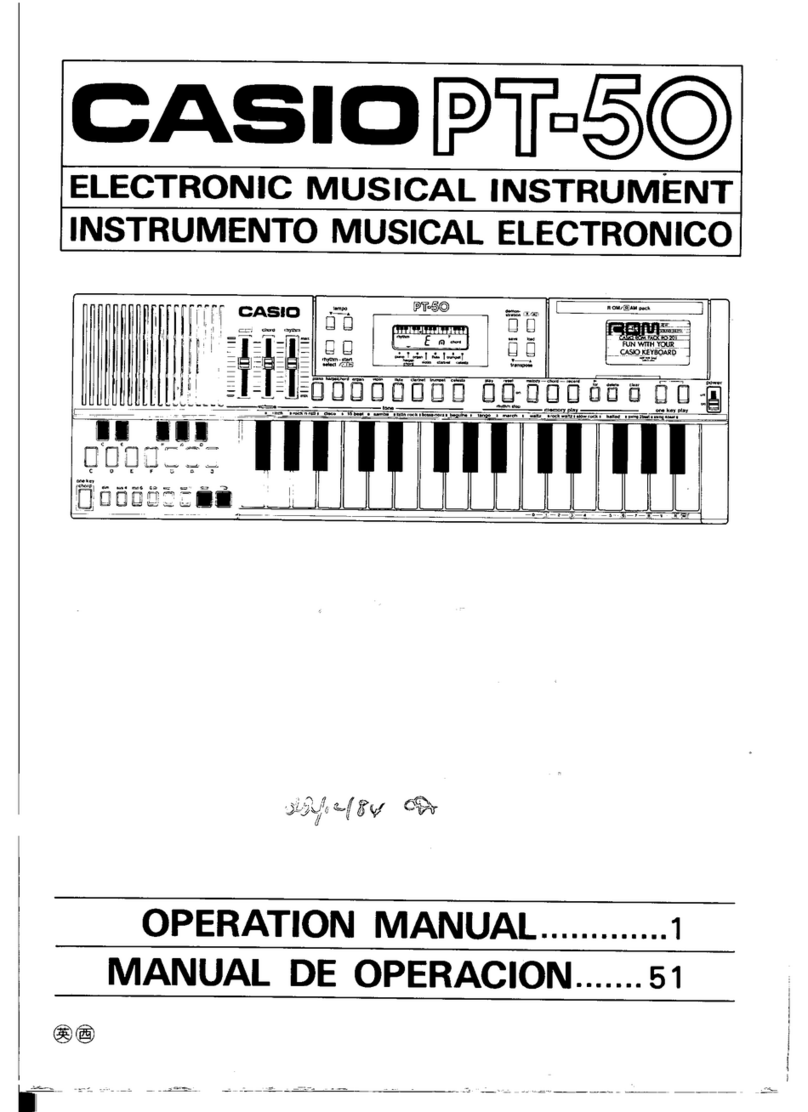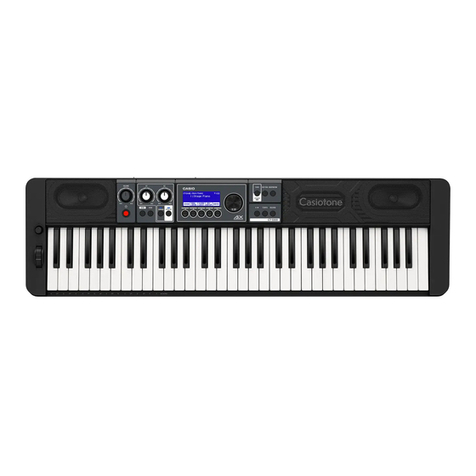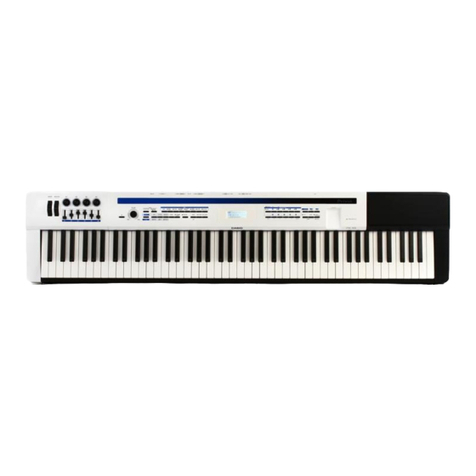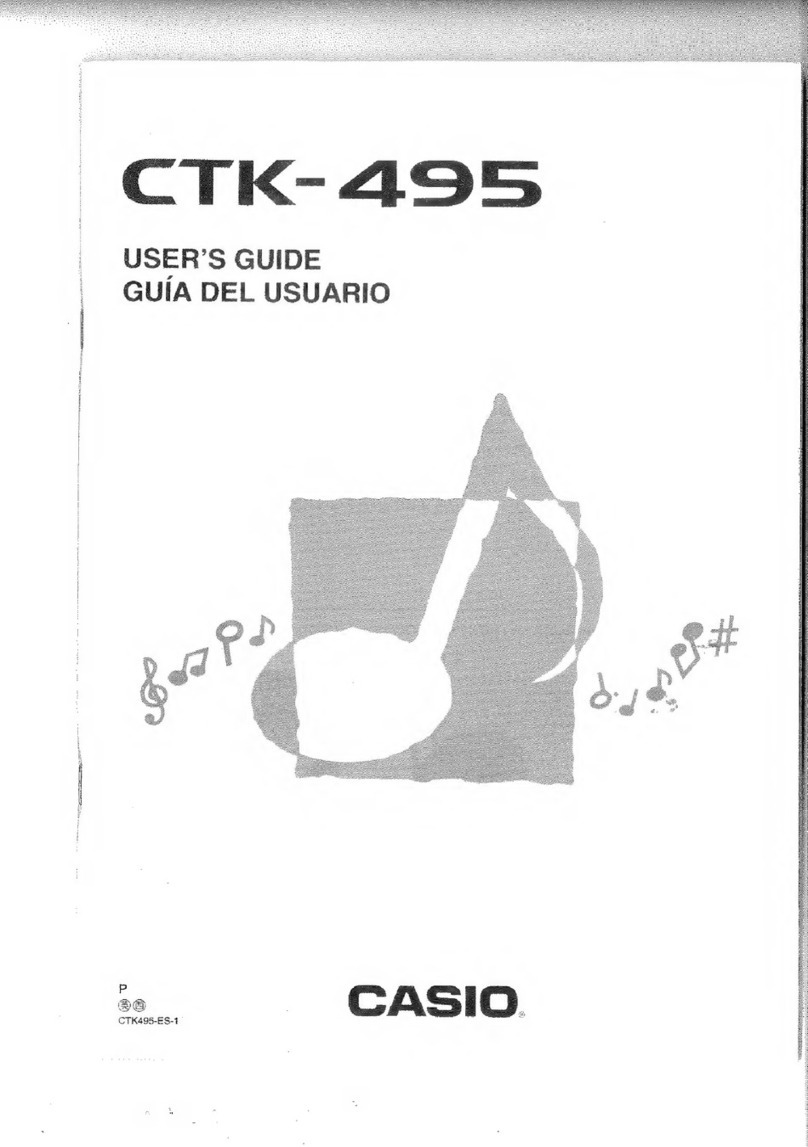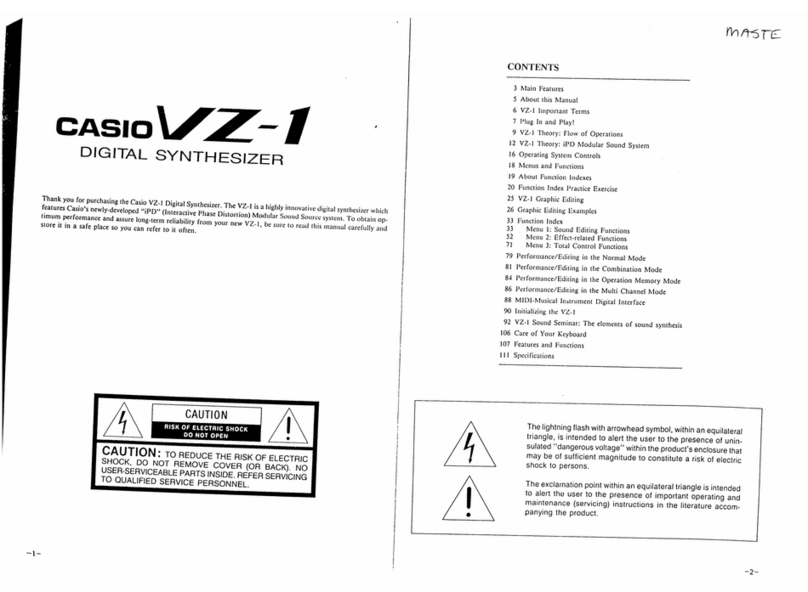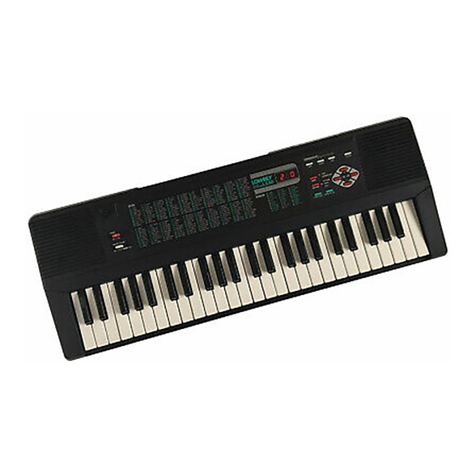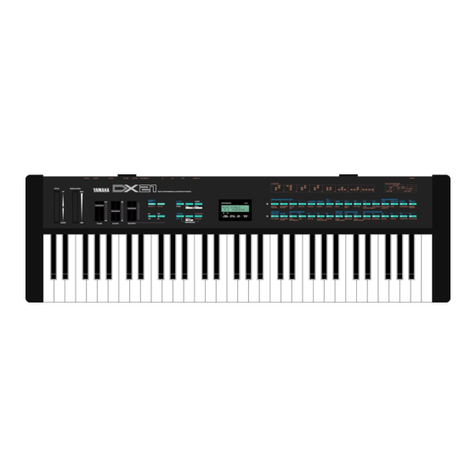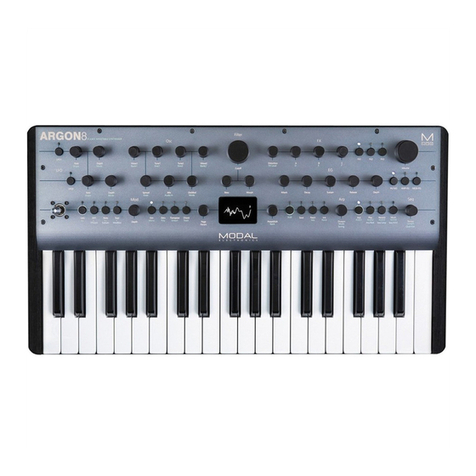
(7) DATA ENTRY SECTION
OIGJTAL SYNTHCSIZEH
URME FORM
FIRST=2 SECi:iHD='
VALUE keys-
PAGE keys-
-©LCD
-Cursor
AVE LOAD
IDOWN IUP IF
•VALUE keys
Used to change the data (values) that appear on the
LCD ®. Each press of the Hkey decreases avalue
by 1,while each press of the key increases avalue
by 1.Holding either key down causes high speed con-
tinous decrease/increase of avalue. These keys are
also used for cartridge data SAVE and LOAD oper-
ations.
*ln the case of KEY TRANSPOSE, these keys are used
to change the key name (represented by alphabetic
characters) rather than numeric values. For MASTER
TUNE, these keys change the pitch of the keyboard,
but the LCD does not show any numeric value.
•ENV POINT keys
Used to specify the SUSTAIN POINT and END POINT
for each of the six envelopes in the dual-line DCO,
DCW. DCA envelopes of the PARAMETER SECTION
TI5USTAM I
-CURSOR keys
-ENVELOPE POINT keys
•PAGE keys
Scrolls the data shown on the LCD (6) to display the
various parameters shown in the table below. The UP
key scrolls the display up, while the DOWN key scrolls
the display down.
•CURSOR keys
Used to move the cursor (" _"below data) on the LCD
®. The akey moves the cursor to the left, while the
Emoves the cursor to the right, when multiple
parameters are being displayed.
*These keys are also used as YES (Q) and NO (0)
keys in data SAVE/LOAD operations, and when ini-
tializing the keyboard memory contents.
PAGE (UP/DOWN)
>^ECTION MODE DATA SAVE/LOAD EFFECT PARAMETER
page\key NORMAL TONE MIX KEY SPLIT MIDI CARTRIDGE/MIDI M.WHEEL/AFTER TOUCH ENV
DOWN
I
UP
TONE NO. LEV 1. LEV 2LOWER. UPPER POLY MULT! CARTRIDGE MOD.WHEEL STEP 1-8
CHORUS ON/OFF TONE 2PITCH SUS.PEDAL ENA/DIS TONE DATA EfW/DIS CHECK CHANNEL MIDI MOD.AFTER TOUCH
^-^-""'''^ CHORUS ON/OFF OCT.SHIFT ^.-.---''^ ^.....----^^ ___--------^ AMP.AFTER TOUCH
^^^-^-^'"^'^ ^.----'''''^ CHORUS ON/OFF ^....^--''"^ ___.,- ^____--------^
•^"^ _i
®CARTRIDGE/MIDI key
1*.?!!? In fnAH*?? '?' ^^® ^"^ '"*®!"^' *°"®® °' ^"^ operation memories from the keyboard to aRAIVI cartridge (option-
hIh nr H^t »""^ ^'.^"^'"^^^ ^° ^^^ ^^^^°''''^- ^^^' ^^^°"'"9' "«'"9 '^^ P^GE UP key. these keys are also
used for data transmission between two CZ-1 's or between aCZ-1 and other Casio synthesizers
r^r^^HHl «r^?'°^f»^^^.°' *^^ PROGRAMMER SECTION is used, specific tones are directly recalled from
acartndge. so internal tone data is no affected. In the case of the CARTRIDGE/MIDI key. however all 64 tones
on the cartndge are written to the keyboard's internal memory by the LOAD operation.
'
-8-

